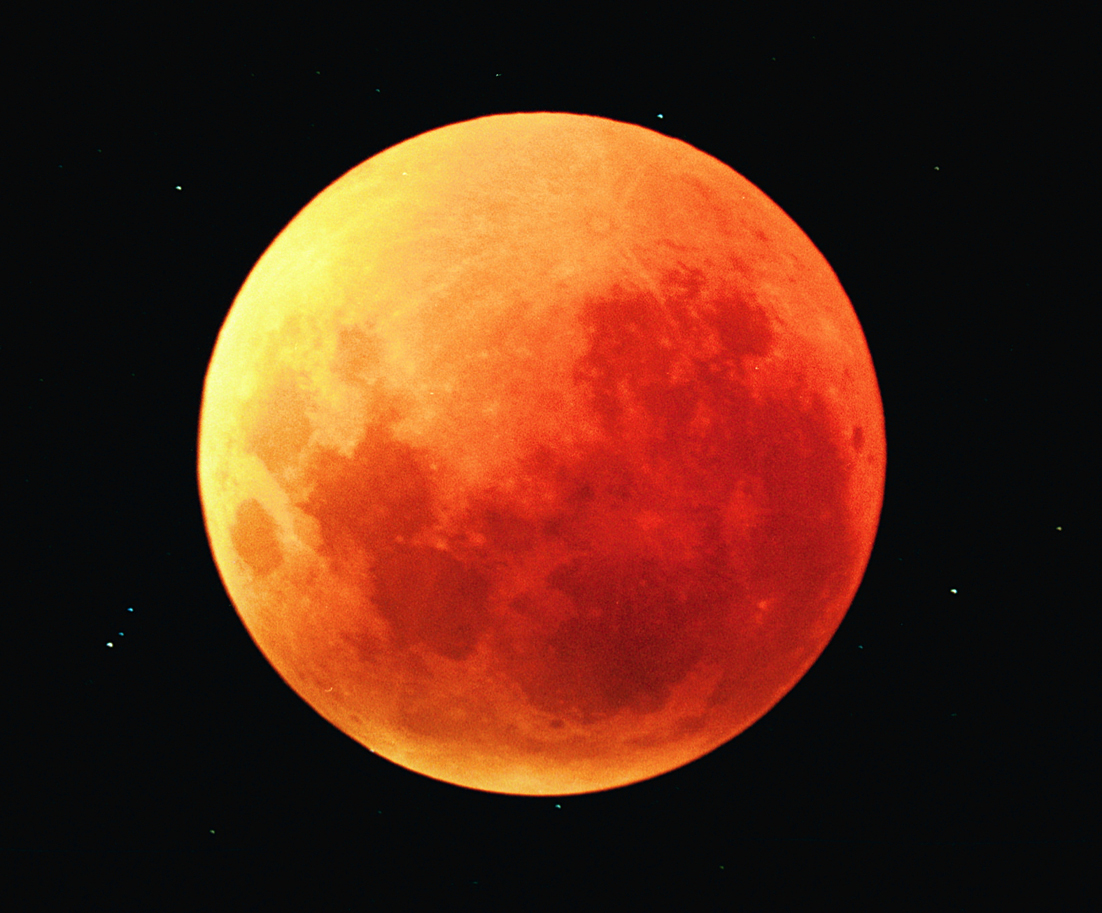It seems as though Lynchburg’s record of clouding over for interesting celestial events is going to hold true for this weekend’s total lunar eclipse. But just in case all the forecasters are wrong, and for those of you who live where clear skies reign, here is the relevant information.
First, just the basic information concerning timing, then more details for those of us who like that sort of thing. You may have seen information giving the date of the eclipse as September 28, but for observers in North America it will occur late in the evening of Sunday, September 27. All times given are EDT.
- Moon enters Earth’s umbral shadow; you will begin to see a dark shadow creeping across the moons face: 9:07 pm
- Totality begins; the moon is fully within Earth’s umbral shadow: 10:11 pm
- End of totality; moon begins to exit umbral shadow: 11:23 pm
- Moon is completely out of umbral shadow: 12:27 am on September 28.
Or more succinctly, the total eclipse lasts from 10:11 pm EDT to 11:23 EDT on Sunday night, September 27.
So what’s up with this umbral shadow thing? Remember first of all how a lunar eclipse occurs: Earth comes between the sun and the moon and casts its shadow on the moon.
Now imagine yourself standing on the moon. If the moon and you are within the umbra, Earth completely blocks the sun. Within the penumbra however, only some of the sun’s disk is obscured by Earth. So while the Sun’s light is completely obscured within the umbra, it is only partially obscured within the penumbra. Totality occurs only when the moon is completely within the umbral shadow.
So the moon ought to be completely dark during totality, right? As anyone who has seen a lunar eclipse can tell you, it isn’t. This is more like it.

If the earth were an 8000-mile diameter ball with no atmosphere, the moon would indeed be dark. But our atmosphere bends (or refracts) the sunlight passing through it, and the light that is bent least is long wavelength red or orange light.

The darkest eclipses occur when the moon passes through the exact center of Earth’s umbral shadow, which is seldom the case. For this eclipse, it passes nearer the edge.
And the parts of the Earth’s surface where it will be visible?
The next total lunar eclipse with this optimal visibility for Americans will not be until 2019. But well before then, we will have a total solar eclipse in August 2017 that will reach its peak in mid-America where Missouri, Kentucky, and Tennessee come together.

You will not want to miss this—experiencing a total solar eclipse is something that should be on everyone’s bucket list. Witness the excitement in this video taken aboard the cruise ship where my wife and I witnessed the solar eclipse of July 2009. It is an amazing natural phenomenon! And yes, I was whooping and shouting along with everyone else.






Leave a Reply